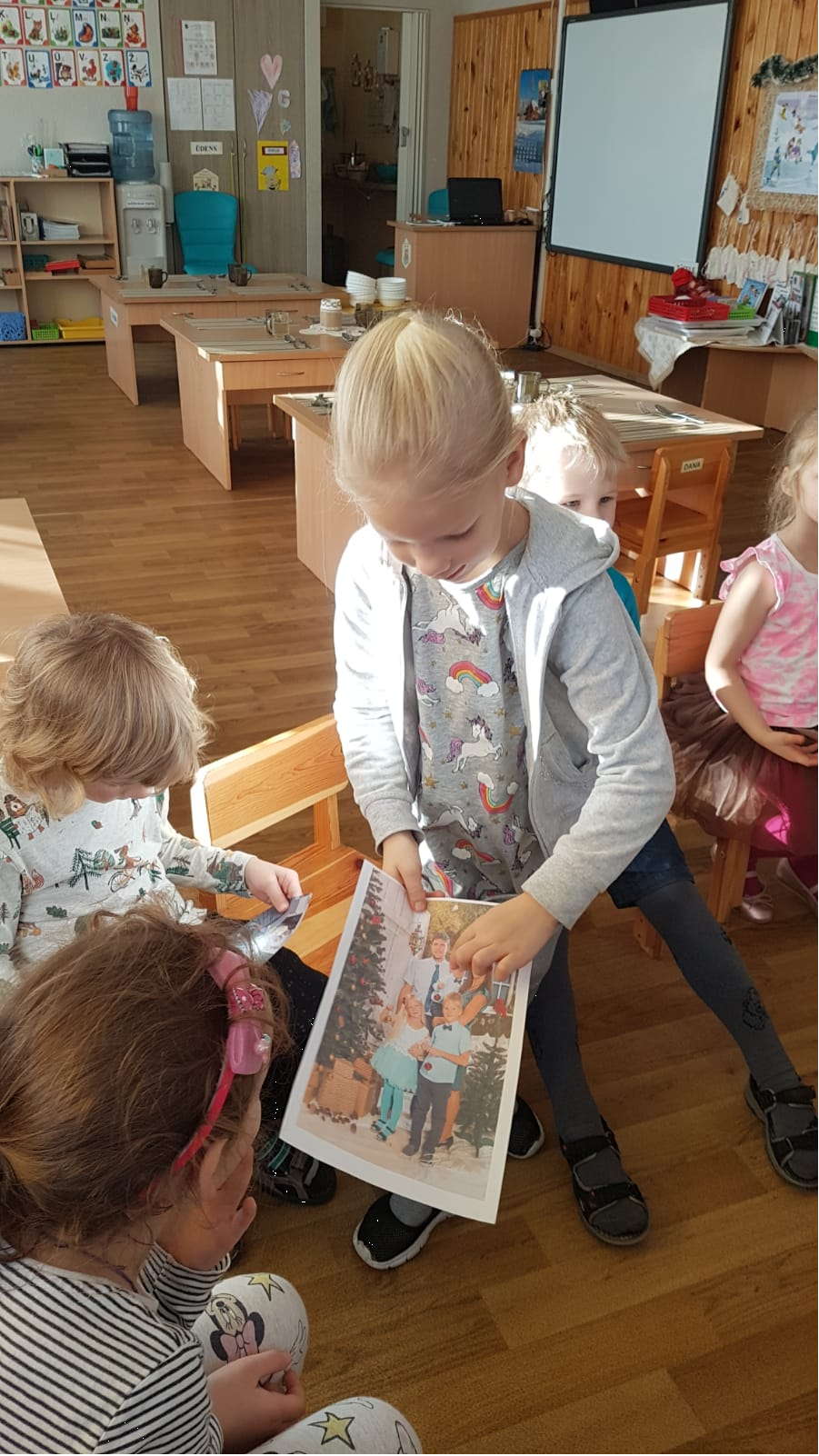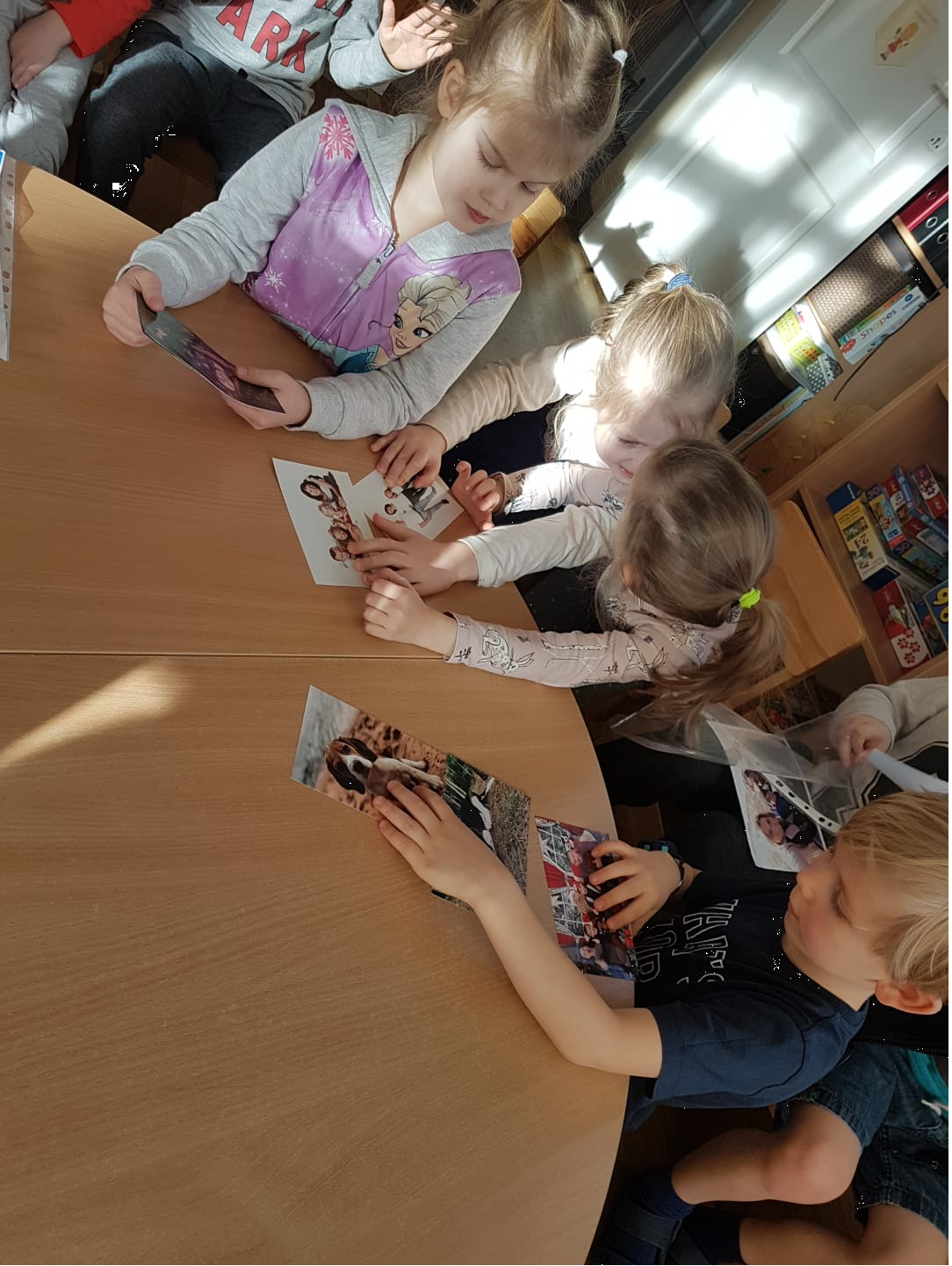News
Kindergartens and schools
Every kindergarten and school that wishes to participate in our project can fill out the application.
Parents
Would you like your child to participate in an international ‘Say Hello to the World’ project? You can speak to your kindergarten teacher and inform her about us, or contact us. We will try to do our best to make it happen.
News
Child speech development in “My family” activity
27/01/2020 09:19:20
This article is about developing child speech in an activity called “Me and My family”. It contains description of activity, how activity went on, and why I chose this activity. And it also contains what kind of organization forms and methods I have used. The article talks about what is language and what is the successful language development in pre-school. It shows what went good and what needs improvements in the activity, and also my conclusions.
I am participating in the project “Say Hello to the World” from Latvia, by working in a preschool educational institution “Avotiņš”, in a group “Burbulīši” as a teacher for 5 to 6 year old children – in a group of 25 children.
I chose to describe developing telling skills in an activity called “Five fingers” about a family. Parents were involved in a way that they had a task (by bring family pictures). They also made a family tree at home together with their kids and they brought them to the kindergarten.
The organization form of this activity is by playing different activities with subgroups, with a whole group and with the child’s independent action. Subgroups were formed by a random selection. On the other side of each child photo were attached a letter. Each child was joining the group who had the same letter on the photography. In that way three groups were formed with eight children in each group. Then we talked over how each letter sounds (G, Ģ, K). In each group kids were invited to talk about their family, tell about family members, and what are the common interests in the family. At the beginning children were talking in Latvian language, later teacher reads the text in English. Then I offered that the children would show pictures to each other. After that I encouraged children to be explorers and try to find similarities, differences, and together to reach a conclusion to whom child looks alike. At the end of each activity I offered different kind of material for children to make their own family, when that is done, they talk about family members in English.
I chose this activity because language is the one what helps to make first steps into exploring the world. Nowadays in a democratic society child is valued as unique person, which should be educated successfully and needs to be prepared for the future life.
Development of a child’s speech is native language learning process, in which a child is attaining language using as surrounding world cognitive tool skill. (Ļubļinska 1979: 255).
Preschool institutions work is the base for the child’s further education, upbringing and development. The purpose of the upbringing is to develop many-sided personality, to build in child “Me” consciousness, the will to explore surrounding world, perceive interconnections, to build skills such as creatively and actively express themselves. Native language and developing are in many ways the upbringing base, starting from the child’s first year. Language is a tool and a base on which forms intellectual and ethic upbringing.
In a hurry of each day tasks, parents often don’t pay enough attention to their own kids, and they can’t always objectively evaluate capabilities of their children. They don’t talk enough with the children.
At the pedagogy children speech and language development cannot be left in self-flow. That way development of speech is one of the main tasks for the preschool educational institution.
V.Golubina emphasizes – by developing speech and language we can see that children of same age show different capabilities in speech learning, even when the teaching is done the same way. Sometimes a younger child can have a larger vocabulary collection than an older one. Once again it proves that besides the age, children need to have individual approach because children developmental levels can differ. By getting to know each child’s individual developmental level, together with parents, has to be found in the right way for the child to improve child’s language development. (Golubina, 2007, 225).
Ž.Piažē division „Seven main roads in developing child’s language”:
- Listen to the child
- Give the child something real to talk about
- Encourage the child and involve her/him in a dialogue
- Use such questions which makes children to answer with more than a one word
- Promote the child’s listening capability
- If needed use a professional help, and attract speech therapist
- Get to know about programs and latest news in science, to fully improve child’s speech (Lieģeniece, Nazarova 1999: 35).
The word is born in silence, but silence we, adults, interrupt with our desire to help and we don’t let the kid to figure out by himself in what words he wants to say – what he is about to say. (Markus, 2007, 30).
For the child’s language development to succeed, I let children talk, ask and tell. I chose this activity to promote telling skills and ability to listen. For developing to happen successfully the main key is a play. Let children to develop through games.
Making a grammatically correct speech – children should hear from an adult grammatically correct made sentences. When teaching grammatically correct speech, you have to pay attention if a child pronounces each sound correctly, and you have to follow if a child chooses correctly the meaning of each word.
Learning grammatically correct speech in time is important to fully learn a language, and main ways to this are practical and play methods. (Kaņepēja, 2003: 60).
I.Pavlovs says, that diction is important indicator as well. If the speech is not clear, the speech defects stays for long time, then speech therapist should be approach and asked for a help because without knowing the actual shortage real reasons, with self-determinate fixing method can be done even bigger affect. (Plotnieks, 1988: 40).
Teaching telling is special speech capabilities, which has to be developed already in the early years of kindergarten. It is possible to see the child speech development level in the narration. Working with narration teaching, leading role is for choosing the right text and letting children to recite it. Recounting in speech lessons helps to improve child narration ability. (Kaņepēja, 2003: 61-62).
The main precondition for successful speech and language learning is emotional ambience. There has to be positive communication with adults and other group members. I always try to achieve this in my work.
I agree with A.Ļubļinska that there are two ways in learning language: the child’s casual, natural connection with surrounding adults, and the teacher’s specially organized learning process. Each child’s speech developing in the coming stages of life often depends from this. Besides the age, each child must have individual approach because children developmental levels differ.
In activity sessions children will be interested because of family pictures which are brought. It was possible to see happiness and pride about their family in the eyes of each child. Successfully organizing activity in subgroups was made by adding a letter on each photo, children had to find letters which they had recently learnt, in this way they strengthen their knowledge about those letters. There are children who gladly with interest talk about their family and their common interests. The child’s speech is affected by this child’s individuality. Some children are good speakers, while others say very little – but specifically direct. Those kids I try to encourage with leading questions, that way making them to think and talk. There are kids who are very emotional and heatedly talks while other are reasoning and joking.
I organized further activity with the whole group together. Then children gladly talked about their family tree which they had prepared together with their parents. The main key of learning language is repeating. Children learn very fast the words and phrases that are used the most.
To have some physical activity after talking and listening, I offered children to a play “Family”. Emotional mood is achieved by playing games. It gives a chance to develop sensory, quest, emotional and other psychic processes. Each child has to take a paper sheet (there are many kids that can read) on which is written one word is in English – a family member (mother, father, sister, brother, etc.). Children have to make a full family, including mom, dad, sister, brother, etc. When the family is done, children come up with the surname for the family. Children like to play “Family”. Playing games helps me to get to know children better. We were improving corporation skills while playing “Family”.

Picture 1. Children are showing their family pictures and talking about their family members. (Photo: teacher Inga Ševčuka)
Further on, children were very happy while they had practical creatively activities in subgroups. Then families were made by different materials, depending on each child’s own choice. We offered them many materials – gouache colours, pencils, crayons, modelling clay, natural materials (dry flowers, leaves, seeds and other.), colourful napkins, cloths, buttons etc.
Only few kids had patience to listen to the other child’s narration. Some of the girls and boys waited for their chance to talk. After they have told everything they wanted to tell about their families, they lost their interest in listening to the others.
Analysing the activity, I realized that I have to let children to operate more independent and practical. I tried to work creatively, to think of different techniques how to achieve children’s interest in getting to know the other children’s families – the way that they would learn about other children’s family members, family traditions and hobbies. By including parents in this project, we have given them a chance to spend time with their kids more productively. They were making together the family tree and talking about their own traditions. Parents were responsive and they participated gladly.

Picture 2. Children are discussing about their family members and pets. (Photo: Gundega Tīrone)
In the age of five, children have very different levels of speech development levels. I came to conclusion that the biggest problem for children was to make full sentences and narration about their family. In the base of speech must be enough vocabulary because if the child’s vocabulary is good enough, then speech capabilities will be improved. I paid attention for broadening the vocabulary with different activities connected with current subject “My family”.
I liked activity very much. The main thing is that the goal was achieved. Children felt interest and they were emotionally surprised. Children had fun. Happiness was brought by talking about their own families. Activities were fulfilled with joy and delight. Soon after the activity I received feedback, children kept talking with each other about their families. They kept saying the same things and remembered to say something that they have forgotten to tell before. As well they came to me and said that they forgot to tell something about their family, like about the food they like or about a movie they watched together. They kept drawing their families. This shows that the child is thinking, doing, creating. That’s why I have come to this conclusion that activity has been planned well and appropriately for each need and age.
Kekava County Municipality Pre-school Education Institution “Avotiņš”
Gundega Tīrone
Literature
- Golubina, V. (2007) Pirmsskolas pedagoga rokasgrāmata. R.: Izglītības soļi, 308 pp.
- Kaņepēja, R. (2003) Runas attīstīšana. // Es gribu iet skolā. R.: Puse Plus, 51. – 65.pp.
- Lieģeniece, D., Nazarova, I. (1999) Veseluma pieeja valodas apguvē. R.: RaKa, 112 lpp
- Ļubļinska, A. (1979) Bērnu psiholoģija. R.: Zvaigzne, 382 lpp.
- Markus, D. (2007) Bērns runā kultūras pasaulē. R.: Rasa ABC, 159 lpp.
- Plotnieks, I. (1988) Psiholoģija ģimenē. R.: Zvaigzne, 171 lpp.




